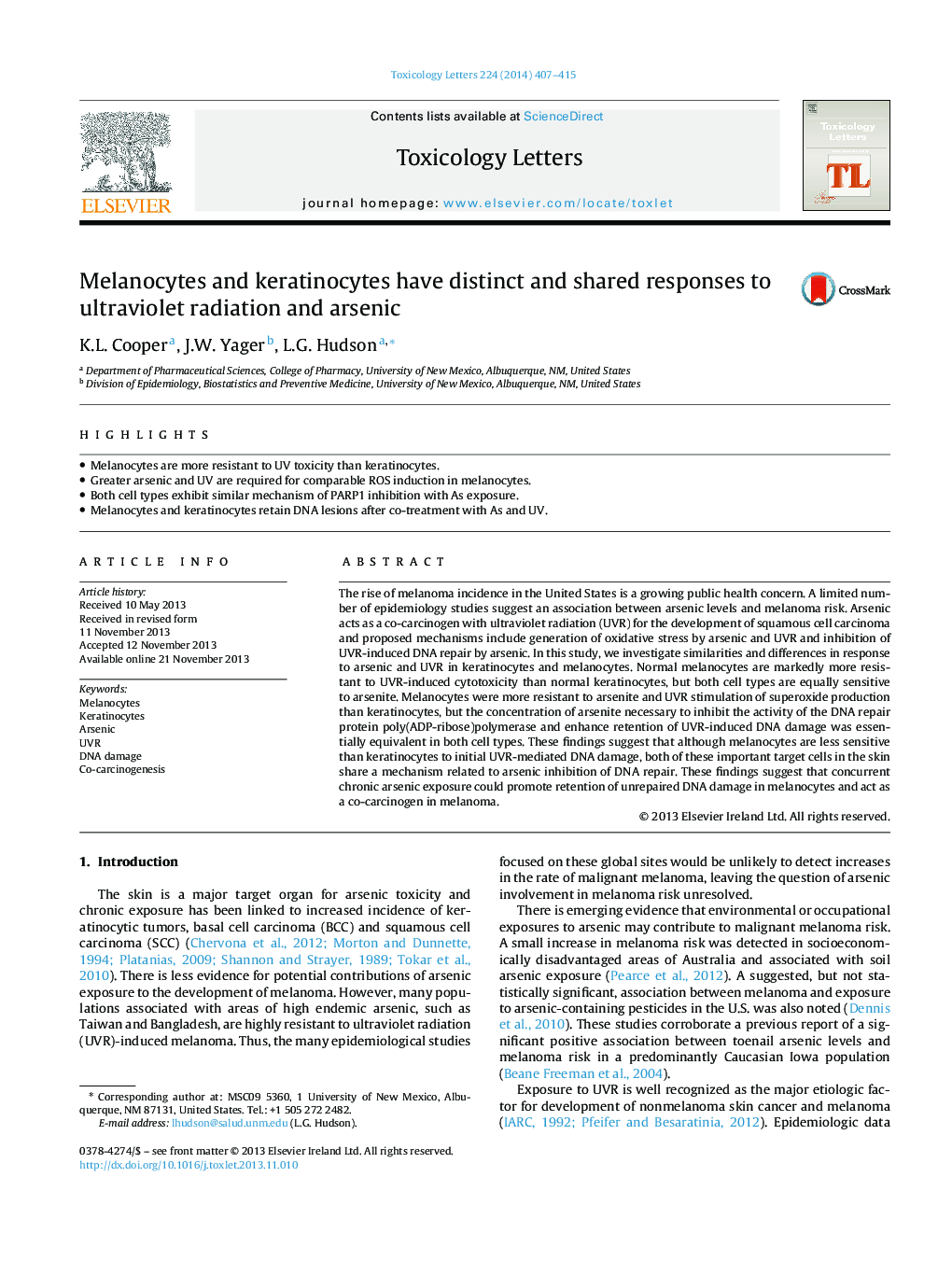| Article ID | Journal | Published Year | Pages | File Type |
|---|---|---|---|---|
| 5860460 | Toxicology Letters | 2014 | 9 Pages |
Abstract
The rise of melanoma incidence in the United States is a growing public health concern. A limited number of epidemiology studies suggest an association between arsenic levels and melanoma risk. Arsenic acts as a co-carcinogen with ultraviolet radiation (UVR) for the development of squamous cell carcinoma and proposed mechanisms include generation of oxidative stress by arsenic and UVR and inhibition of UVR-induced DNA repair by arsenic. In this study, we investigate similarities and differences in response to arsenic and UVR in keratinocytes and melanocytes. Normal melanocytes are markedly more resistant to UVR-induced cytotoxicity than normal keratinocytes, but both cell types are equally sensitive to arsenite. Melanocytes were more resistant to arsenite and UVR stimulation of superoxide production than keratinocytes, but the concentration of arsenite necessary to inhibit the activity of the DNA repair protein poly(ADP-ribose)polymerase and enhance retention of UVR-induced DNA damage was essentially equivalent in both cell types. These findings suggest that although melanocytes are less sensitive than keratinocytes to initial UVR-mediated DNA damage, both of these important target cells in the skin share a mechanism related to arsenic inhibition of DNA repair. These findings suggest that concurrent chronic arsenic exposure could promote retention of unrepaired DNA damage in melanocytes and act as a co-carcinogen in melanoma.
Related Topics
Life Sciences
Environmental Science
Health, Toxicology and Mutagenesis
Authors
K.L. Cooper, J.W. Yager, L.G. Hudson,
